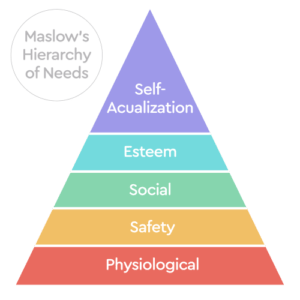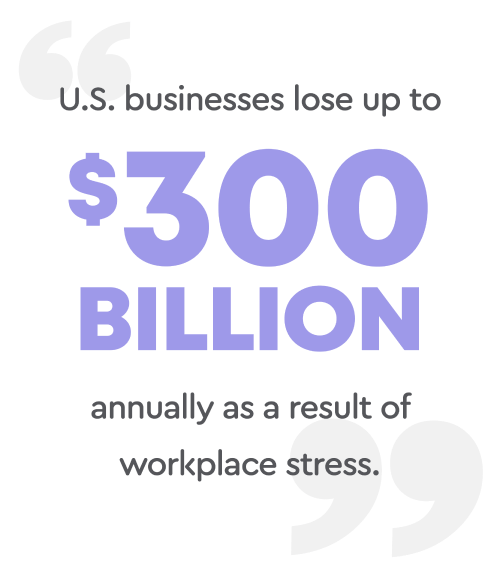What a Dynamic Company Culture Looks Like in 2022 & Beyond
As our workplaces settle into the new remote normal with social injustice in the headlines every day, your employees’ needs and expectations are dramatically changing. It’s time to put your money where your mouth is — ping-pong tables and bean bag chairs aren’t going to cut it as a proxy for creating a company “culture” anymore, especially since no one can enjoy them these days anyhow.
Instead, you should be aligning your company culture with initiatives that actually drive results, like encouraging a healthy work-life balance or increasing corporate responsibility. While that may sound like a lot, you don’t need to rework Maslow’s Hierarchy — in fact, revamping your culture can be pretty simple.

At Bullhorn’s EngageX 2020 conference, members of the interviewstream team were able to attend sessions and roundtable discussions with hiring at the center of the conversation. Based on what we learned, here’s where your company culture should focus in 2020 and beyond:
Be Transparent
It’s a weird time — there’s no right way to address all of the concerns that your employees have, but the worst thing you can do for your team is allow the elephant to stay “in the room” without addressing it directly. Be transparent at every step of this journey, however long it may be — and be honest about what you don’t know as well. A direct and upfront approach is critical to ensure psychological safety AKA the shared belief amongst team members that the team is a safe space for risk-taking. While the concept seems vague, colleagues that feel more “safe” with each other consistently perform at higher levels than their counterparts. Whether you choose to host an internal town hall via video chat or send out weekly newsletter emails, take time to highlight wins, share challenges, and ask questions as a company.
Facilitate Tough Conversations
In a similar vein, it’s important to address the uncomfortable stuff that’s happening in the world head-on. Some important convos you should be starting are:
- How to respond to a positive COVID-19 diagnosis. Coronavirus cases continue to climb by the day. Your employees should have a clear understanding of what happens if they, or a family member, contracts the illness, like what their health insurance covers, what they can expect for sick leave, and what the CDC recommends for quarantining. (Side note: if any of your employees do get sick, putting together a care package is becoming a pretty thoughtful gesture. Think – a cozy blanket, a scented candle, and an industrial-sized box of masks. Even if no one gets sick, a lot of companies are also creating #wfh care kits.)
- The importance of monitoring mental health. While physical health is top of mind, the mental health of millions of people is also taking a major hit at the moment. Between isolation, worries about personal health, concerns about the economy, and attempting to maintain a realistic work-life balance, your employees are mentally exhausted in a way that they’ve never been before. And it’s more than just a culture issue — U.S. businesses lose up to $300 billion annually as a result of workplace stress. Your employee benefits package should include mental health support; look into what your different plans cover and send out an email or two with suggestions on how to best capitalize on those options during this time.

- Initiatives to improve diversity and inclusion. While the two often combined, they’re actually different concepts with different meanings. Built In defines diversity as the traits and characteristics that make people unique, while inclusion refers to the behaviors and social norms that ensure people feel welcome. Every employee brings a unique background and skill set to the table and, at the bare minimum, they should feel comfortable in their work environment. Start by building your own definitions of diversity and inclusion. Make sure your employees understand the importance of not just treating each other with respect, but accepting and embracing all team members for their differences. Empower team members to use internal platforms to educate their colleagues and discuss the hot-button topics that are driving change around the world.
Reinforce Positivity in the Workplace
In order for these tough conversations to be effective, go above and beyond to create levity. Off the bat, that sounds difficult in itself – having fun in the office is one thing, but when we’re fully remote, it’s a completely different beast.
Zoom happy hours have earned themselves a cheesy rep because companies tend to go into them with the wrong approach, AKA no real approach at all. We’ve all been in a “fun” Zoom where 20+ people are chatting over each other on a slight delay, or worse, where no one talks at all and you’re left wondering when it’s socially acceptable to hop off.
Right now, most people don’t have many face-to-face interactions outside of the Zoom “bubble”, so instead of the generic happy hour, offer optional interactive sessions like these (BTW, you can always offer the option for your employees to come with a drink in hand):
- Invite Goat-2-Meeting, a service run by a California animal rescue and farm. Their staff jumps onto any conference call and walks your team around their sanctuary, introducing you to cows, goats, sheep, and whoever else is roaming around.
- Schedule yoga or meditation classes. Kickstart your employees’ day with a nice 9 AM asana session so they can take a moment to breathe – and prepare themselves to have a productive day.
- Any big readers on staff? Start a book club. This one’s pretty self explanatory.
- If members of your team have a skill they’re open to teaching or sharing with others, provide them that platform. From artists to comedians to cooks, the opportunities here are endless. That said, this requires a bit of vulnerability, and feeling that psychological safety, so maybe save this one for last (or for the team extrovert).
At the end of the day, we all want to get through this and, if possible, become better versions of ourselves. It’s likely that your company is one of the few stable things in your employees’ lives right now – don’t lose sight of that simple and powerful fact. As our world evolves, ensure that your company culture continues to evolve with it. Not only will you grow as a team, your organization will reap the benefits of engaging your employees for years to come (and maybe you’ll even have a little fun along the way).
Interested in our HR newsletter? Sign up below!
Sign up for our newsletter – we send out an email every 6 weeks which includes HR trends, industry-relevant knowledge,
and the latest interviewing tips for recruiters and candidates.
About The Author
Caroline Chessia is the Marketing Operations Specialist at interviewstream. She loves color-coordinated graphs, hiking in the mountains, and every dog she meets—especially the Golden Retrievers.
